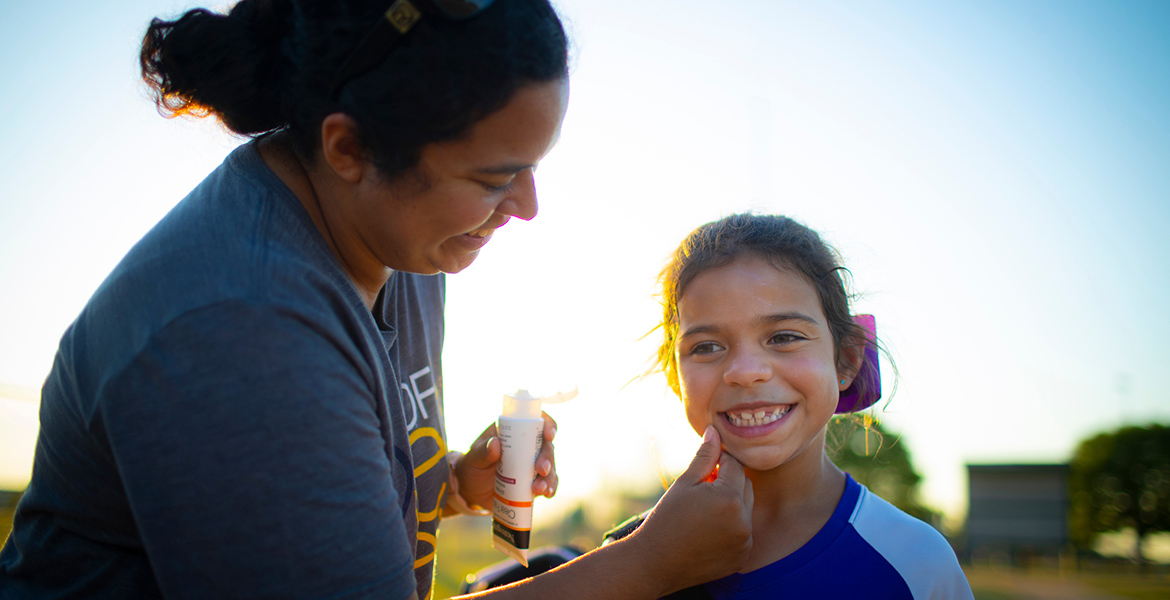
Sunscreen is a must year-round in order to protect skin
Thursday, June 25, 2020
Summer is officially here, and that means people will be spending more time in the great outdoors. To help ensure skin safety in the sun, it’s a good idea to be vigilant with sunscreen. With so many types available, choices are difficult.
And what do those numbers really mean?
Smart sun-lovers know that sunscreen will help protect them and their families from sunburn and reduce the odds of skin cancer. How they use such products – in conjunction with other protective measures – makes a big difference, said Gina Peek, Oklahoma State University Extension housing and consumer specialist.
“Not only can a sunburn be painful, it also causes early skin aging,” Peek said. “Sunscreen is an effective tool we have to help keep our skin protected as long as it is used properly. One application before leaving the house to spend hours in the sun simply won’t cut it.”
Peek said research indicates sunscreen users overall still get sunburned frequently, which may be due to products not being used frequently enough, inadequate quantities, or applying and reapplying protection too late. Staying outdoors longer and not wearing protective clothing are key considerations as well, as is the time of day.
“The sun is stronger in the middle of the day compared to early morning and early evening hours. Your risk of sunburn is higher at mid-day,” she said.
To help cut down the risk of exposure, a broad-spectrum sunscreen with a sun protective value of at least 15 should be used. The SPF value indicates the level of sunburn protection provided by the product; the larger the number, the stronger the shield.
It’s also important to follow directions on the package for correct application and how often the sunscreen should be reapplied. Typically, sunscreen should be reapplied at least every two hours, and more often for those who are in and out of the water or sweating.
Peek said enough sunscreen should be used to cover a person’s entire face and body. An average-size person needs at least one ounce of sunscreen to do the job, which is about the amount needed to fill a shot glass.
Retail shelves are stocked with many sunscreen forms, including lotions, creams, sticks, gels, butters and sprays, all of which may have different application directions. The words, “broad spectrum,” on a label refer to chemicals that provide the widest range of protection from types of ultraviolet (UV) radiation.
“Remember to apply sunscreen to all exposed skin, including ears, nose, lips, back of the neck, hands and the tops of your feet,” she said. “Also, use it along the hairline, as well as areas of the head that are exposed by balding or thinning hair.”
Peek said people often have sunscreen leftover from the previous year. However, it is a good idea to check the label for an expiration date. Expired sunscreen should be thrown away because there is no assurance it is still a safe product to use.
In addition to using sunscreen appropriately, there are other sun-protective measures that can be taken. For example, wear lightweight, light-colored long-sleeved shirts, pants, sunglasses and wide-brimmed hats to minimize sun exposure. Consumers may think long sleeves during the summer would be uncomfortably warm, but modern light-weight materials can be quite comfortable.
“Families will be spending a lot of time together this summer, whether in the backyard, riding bikes, hiking or a variety of other activities,” Peek said. “Using sunscreen properly is just one way to help keep your family safe on all of their adventures.”
MEDIA CONTACT: Trisha Gedon | Agricultural Communications Services | 405-744-3625 | trisha.gedon@okstate.edu
